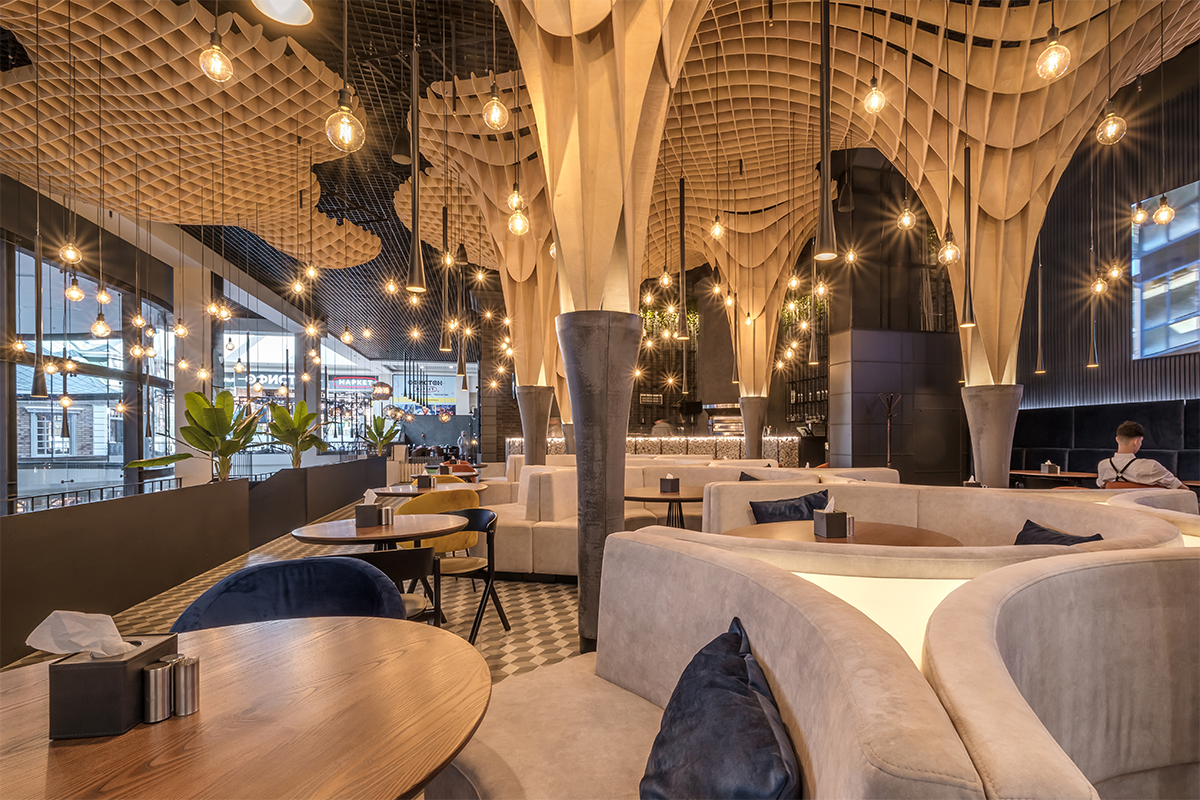Asian Restaurant ISB: A Must-Try Spot for Food Lovers in Islamabad
Wiki Article
Savor Authentic Oriental Food With a Pan-Asian Twist for a Culinary Experience
Getting started on a cooking trip through genuine Oriental food, enhanced with a Pan-Asian twist, supplies a distinct possibility to check out the rich tapestry of flavors that define the region's diverse culinary traditions. As you contemplate these enticing recipes, consider the cultural narratives and historic impacts that shape them, each bite supplying a story waiting to be found. Best ambiance restaurants Islamabad.
Checking Out Pan-Asian Flavors
In the realm of global gastronomy, Pan-Asian cuisine stands out for its exceptional variety and the unified interaction of flavors from numerous Oriental societies. This culinary strategy celebrates the special components and abundant practices found throughout the continent, producing a tapestry of preferences that is both interesting and rewarding. Key to Pan-Asian cuisine is its capacity to stabilize different tastes-- pleasant, salted, spicy, and sour-- while highlighting the freshness and quality of each ingredient.From the umami-rich soy sauce of Japan to the fiery chili peppers of Thailand, Pan-Asian cuisine offers a comprehensive scheme of flavors. These components are usually combined in inventive ways, improving recipes with layers of intricacy. For circumstances, using aromatic natural herbs such as lemongrass and cilantro, usual in Vietnamese and Thai food, adds a revitalizing illumination to meals, while the unification of coconut milk delivers a creamy, rich texture.
The emphasis on fresh produce and aromatic seasonings makes certain that each meal is not just a banquet for the palate yet also for the senses. Pan-Asian cuisine welcomes diners to start a culinary journey, discovering the substantial and varied landscapes of Asian gastronomy with every bite.
Blend Recipes to Try
While Pan-Asian food is commemorated for its traditional flavors, the modern cooking landscape is progressively welcoming blend meals that blend these timeless components with impacts from various other regions. This cutting-edge approach not just honors the abundant heritage of Asian cooking arts however additionally introduces unique taste experiences that interest contemporary tastes.
An archetype of such a fusion recipe is the Korean-Mexican taco, where seasoned bulgogi beef is wrapped in a cozy tortilla, topped with kimchi and a hot gochujang-infused salsa. This combination weds the bold, tasty flavors of Korea with the vibrant, fresh aspects of Mexican cuisine. Similarly, sushi burritos have acquired popularity, joining together the fragile creativity of Japanese sushi with the passionate, hand-held comfort of a burrito, commonly featuring fusion ingredients like tempura shrimp and avocado with a drizzle of wasabi mayo.
Another significant recipe is Thai curry ramen, which instills the velvety, fragrant flavors of Thai curry right into the soothing brew of standard Japanese ramen, developing a harmonious mix that entices the senses. These combination dishes extend beyond simple novelty; they represent a culinary dialogue in between societies, motivating exploration and innovation worldwide of Pan-Asian food.
Vital Components and Flavors
To truly appreciate Pan-Asian food, one must understand the crucial ingredients and seasonings that form its foundation. This diverse cooking style attracts from an abundant tapestry of Asian practices, using an unified mix of tastes and structures.Aromatic elements are critical, with garlic, lemongrass, and ginger being ubiquitous across different Pan-Asian dishes. These components provide a great smelling base that improves the intricacy of flavors. Flavors such as celebrity anise, cardamom, and cinnamon introduce heat and personality, resembling impacts from areas like China and India.

Food Preparation Methods and Tips
Grasping the art of Pan-Asian food calls for experience with its distinctive food preparation techniques, each adding to the vivid tapestry of tastes this cooking practice is commemorated for. Central to these methods is the stir-fry, a rapid cooking technique that protects click to investigate the nutritional stability and vivid colors of components. Making use of a frying pan, the stir-fry technique permits even warm distribution, crucial for accomplishing the particular texture and taste equilibrium of Pan-Asian meals.One more essential strategy is steaming, particularly prevalent in Chinese cuisine. This gentle technique preserves the natural tastes and nutrients of ingredients, making it excellent for fish and shellfish and over here veggies. Dumplings, a beloved staple, frequently gain from steaming, leading to soft, succulent textures.
Grilling, likewise important, imparts smoky depths to dishes such as Korean bulgogi or Japanese yakitori (asian fusion restaurant). This technique commonly involves marinating components, permitting flavors to permeate deeply before cooking over an open flame or warm plate
Lastly, grasping the art of stabilizing flavors-- pleasant, sour, salted, bitter, and umami-- is critical. Appropriately layering these aspects can elevate a recipe from average to remarkable, using a complex and pleasing cooking experience that embodies the essence of Pan-Asian cuisine.
Dining Experiences Worldwide
Across the globe, Pan-Asian food uses an unequaled dining experience, commemorated for its abundant tapestry of tastes and dynamic discussions. This cooking phenomenon has actually gone beyond cultural boundaries, capturing the hearts and tastes of food fanatics worldwide. In worldwide cities like New York, London, and Sydney, Pan-Asian restaurants offer as fusions where culinary practices from Thailand, Japan, China, and beyond converge, giving diners with a diverse mix browse around here of recipes that highlight the area's diversity.The worldwide appeal of Pan-Asian food exists in its capacity to provide both credibility and development. Cooks masterfully marry typical ingredients such as lemongrass, soy sauce, and miso with modern techniques, causing meals that are both refreshingly new and familiar. This fusion permits restaurants to start a culinary trip that values heritage while accepting modernity.
In addition, dining experiences are raised via attentively made settings that reflect the values of Pan-Asian aesthetics. From minimalist Japanese-inspired insides to dynamic Thai-themed areas, each restaurant offers an unique setting that complements the culinary offerings. Consequently, customers are not simply consuming a dish but partaking in a cultural experience, making Pan-Asian eating a genuinely worldwide sensation.
Final Thought
The expedition of Pan-Asian cuisine provides a profound understanding of the intricate interplay of flavors and cooking customs across Asia. By embracing fusion dishes such as Thai curry ramen and sushi burritos, the culinary journey not just highlights the flexibility of standard active ingredients but likewise showcases innovative contemporary techniques. This gastronomic adventure, improved by cooking approaches and necessary seasonings, gives an one-of-a-kind opportunity to value the multiculturalism and cooking creativity that specify Pan-Asian food on an international range.Getting started on a cooking trip with authentic Oriental cuisine, enhanced with a Pan-Asian spin, uses a distinct possibility to explore the abundant tapestry of tastes that specify the area's varied culinary practices.In the realm of international gastronomy, Pan-Asian cuisine stands out for its impressive diversity and the unified interplay of flavors from various Asian societies. Key to Pan-Asian cuisine is its capability to balance contrasting tastes-- pleasant, salty, spicy, and sour-- while highlighting the freshness and high quality of each active ingredient.

Report this wiki page